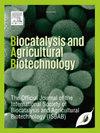中国东北不同生境三七及其加工品的化学成分比较与质量评价
IF 3.4
Q2 BIOTECHNOLOGY & APPLIED MICROBIOLOGY
引用次数: 0
摘要
人参(Panax ginseng C.A. Meyer)具有多种促进健康的功效,是中医广泛使用的膳食补充剂。然而,有关不同人参化学成分差异的研究十分有限。因此,本研究探讨了从中国东北不同生境获取的不同人参的化学成分。本研究从中国吉林省的不同地方采集了鲜参、红参和白参。人参提取物中的人参皂苷和非人参皂苷含量采用超高效液相色谱法(VION® ion mobility hybrid Quadrupole Time-of-Flight)进行分析。结果表明,不同样品的人参皂苷含量存在明显差异。人参皂苷 Re、Rg1 和 Rb 的定性比为 46.2%,其中 Re 的含量最高,其次是 Rg1 和 Rb1。此外,研究还发现,白参和红参的总人参皂甙(8.18 ± 0.04 mg/kg)和总多糖(17.4%)含量分别较高。新鲜人参样本的蛋白质含量(20.02 ± 0.2 克/100 克)和脂肪含量(2.0 克/100 克)均高于其他样本。此外,本研究分析的人参样品在总灰分、重金属和有机氯农药残留方面均符合《中国药典》规定的要求。本研究对来自中国东北不同生境的人参的化学成分进行了全面的比较分析。它强调了在选择人参类型进行科学评估时做出明智选择的重要性。本文章由计算机程序翻译,如有差异,请以英文原文为准。
Comparison of chemical components and quality evaluation of Panax ginseng and its processed products from different habitats in Northeastern China
Ginseng (Panax ginseng C.A. Meyer) is a widely used dietary supplement in Traditional Chinese Medicine due to its numerous health-promoting properties. However, limited research is available on the distinctions in the chemical composition between different ginsengs. Hence, this study explores the chemical composition of different ginsengs obtained from different habitats in Northeastern China. The fresh, red, and white ginsengs were collected from different places in the Jilin province, China. Ginsenoside and non-ginsenoside contents in the ginseng extracts were analyzed by an Ultra-high performance liquid chromatography system & VION® ion mobility hybrid Quadrupole Time-of-Flight. The results show a notable difference in the ginsenoside content among the samples. The qualification ratio of ginsenoside Re, Rg1, and Rb was 46.2%, with Re being the most abundant, followed by Rg1 and Rb1 in all the ginseng analyzed. Furthermore, the study revealed that white and red ginseng had higher total ginsenosides (8.18 ± 0.04 mg/kg) and total polysaccharides (17.4%) content, respectively. The fresh ginseng samples exhibited higher protein content (20.02 ± 0.2 g/100g) and lower fat content (2.0 g/100g) than others. Further, the ginseng samples analyzed in this study met the requirements specified in the Chinese Pharmacopoeia for total ash, heavy metals, and organochlorine pesticide residues. This study offers a comprehensive comparative analysis of the chemical composition of P. ginseng sourced from various habitats in Northeastern China. It underscores the significance of making informed choices when selecting ginseng types for scientific evaluation.
求助全文
通过发布文献求助,成功后即可免费获取论文全文。
去求助
来源期刊

Biocatalysis and agricultural biotechnology
Agricultural and Biological Sciences-Agronomy and Crop Science
CiteScore
7.70
自引率
2.50%
发文量
308
审稿时长
48 days
期刊介绍:
Biocatalysis and Agricultural Biotechnology is the official journal of the International Society of Biocatalysis and Agricultural Biotechnology (ISBAB). The journal publishes high quality articles especially in the science and technology of biocatalysis, bioprocesses, agricultural biotechnology, biomedical biotechnology, and, if appropriate, from other related areas of biotechnology. The journal will publish peer-reviewed basic and applied research papers, authoritative reviews, and feature articles. The scope of the journal encompasses the research, industrial, and commercial aspects of biotechnology, including the areas of: biocatalysis; bioprocesses; food and agriculture; genetic engineering; molecular biology; healthcare and pharmaceuticals; biofuels; genomics; nanotechnology; environment and biodiversity; and bioremediation.
 求助内容:
求助内容: 应助结果提醒方式:
应助结果提醒方式:


